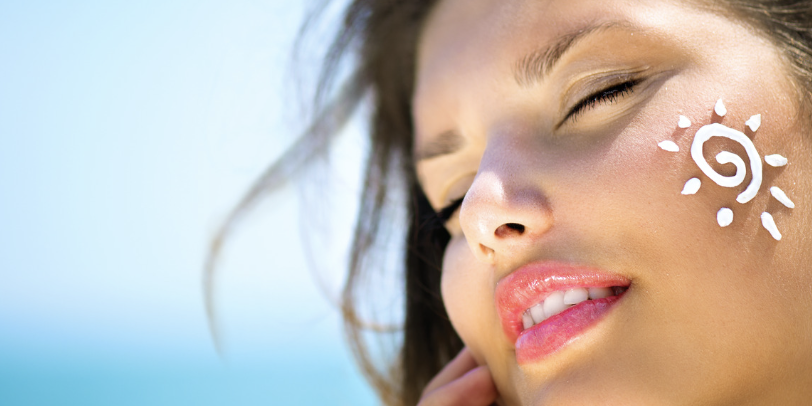Skin damage caused by sunlight (photoaging) is one of the most important factors in the aging process of the skin. The most important cause of loss of elasticity, fine lines, loosening and sagging, irregular color tone, freckles and spots is the damage caused by sunlight on the skin. Protection from intense sunlight is one of the most important preventable risk factors for skin cancers. Sunburns in childhood are very risky in terms of skin cancers that may develop in the future. It is important to be informed about sun protection and to get into the habit of using sunscreens.
How to Protect from the Sun?
The most important step in sun protection is to avoid the sun, especially between 10:00-14:00, when the sun's rays are at their peak. Not only in clear and sunny weather, but also on cloudy and overcast days, of ultraviolet (UV) rays reach the earth's surface. It should be noted that normal window glass does not transmit UVB, but it will not prevent UVA rays from passing through. It is therefore necessary to protect against the harmful effects of daylight even indoors.
What are Passive Methods of Sun Protection?
Our clothes form an important barrier against the sun. Hats and sunglasses should be worn. Ideally, a hat with a 10 cm sun visor should be used. When choosing a hat, light-proof fabric should be preferred. Thick fabrics, tightly woven fabrics, polyester clothing have higher protective properties. Sunglasses with full UVA-UVB filters should be used to prevent the effects of sunlight on the eyes and cataract formation.
How to Choose a Sunscreen?
When choosing a sunscreen, broad spectrum products that protect against both UVA and UVB should be selected. Since "physical protectants" in sunscreens physically block the sun's rays (e.g. zinc oxide or titanium dioxide), they are used together with chemical protectants in broad spectrum products. In areas with average sun exposure, SPF 15 may be sufficient in winter, but not in summer. Protection below SPF 15 should not be used, and creams with a protection factor of at least 30 should be used for the summer months.
How should sunscreen products be used?
Sunscreens should be applied 20 minutes before going outside and should be renewed every 3-4 hours. Sunscreens should be reapplied after swimming, excessive activity and drying off. Sunscreens should be applied generously, in a layer, with sufficient thickness on all UV-exposed areas. Considering only the face, ideally roughly 1/2 teaspoon of sunscreen should be applied to the entire face.
Why Should We Protect Children from the Sun?
People are exposed to of the total UV they will receive throughout their lives in the first 20 years of their lives. For this reason, sun protection, especially for children, is very important in terms of preventing skin cancers that may develop later in life.
Do Sunscreens Affect Vitamin D Production?
The fear that the use of sunscreen will interfere with vitamin D synthesis has led people to avoid the use of sunscreen. However, only 10-20 minutes of sun exposure to the face and back of the hand is sufficient to ensure the highest vitamin D production, even with regular sunscreen use.

